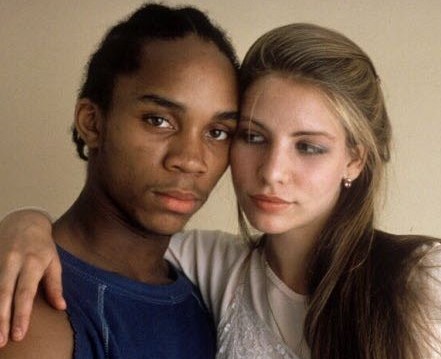Do you remember the famous TV show “Fame” and its iconic dancer Leroy Johnson? The actor behind this unforgettable character was the talented Gene Anthony Ray. Although his life was cut short, his impact on the world of dance continues to inspire countless artists. Let’s take a look at the incredible life and enduring legacy of Gene Anthony Ray.
Gene Anthony Ray rose to fame as a young actor and dancer in the 1980s. His role in the TV series “Fame” catapulted him to stardom, and his raw talent and magnetic presence captivated audiences around the world. Despite his success, Ray battled personal demons that ultimately took a toll on his life.
Even though Gene Anthony Ray may no longer be with us, his contributions to dance and his unmatched passion for his craft continue to influence dancers and performers today. Join us as we delve into the life and legacy of the dance legend, Gene Anthony Ray.
Brief overview of Gene Anthony Ray’s life and career
Gene Anthony Ray, best known for his role as Leroy Johnson in the film and television series Fame, His electrifying dance moves and undeniable charisma made him a standout in the entertainment industry, but behind the scenes, he grappled with personal struggles. Born in Harlem, New York, Ray’s childhood was turbulent, as he navigated a tough upbringing while nurturing his passion for dance.
Ray’s breakout role came in 1980 when he starred alongside Debbie Allen in the movie Fame, which garnered critical acclaim and propelled him into stardom. However, despite his success on screen, Ray faced battles with substance abuse that overshadowed his career achievements. Despite these challenges, Gene Anthony Ray impact on popularizing street dance culture remains undeniable. His legacy continues to inspire aspiring dancers and performers worldwide, serving as a reminder of the power of raw talent and relentless determination amidst adversity.
Mention his role as Leroy Johnson in the movie “Fame”
Gene Anthony Ray’s unforgettable portrayal of Leroy Johnson in the movie Fame solidified his status as a dance icon and inspired countless aspiring artists. His raw talent and magnetic stage presence brought the character of Leroy to life, captivating audiences with his electrifying dance performances and emotional depth. Ray’s ability to infuse vulnerability into his character added layers of complexity, making Leroy a relatable figure for viewers from all walks of life.
In Fame, Gene Anthony Ray expertly portrayed the struggle and determination of a young artist trying to find their place in the world. His journey as Leroy Johnson highlighted the challenges faced by individuals pursuing their dreams in the competitive world of performing arts. Through his nuanced performance, Ray conveyed the grit, passion, and resilience required to succeed in an unforgiving industry, resonating deeply with audiences who shared similar aspirations.
Ray’s embodiment of Leroy Johnson transcended mere acting; it was a testament to his own personal experiences and struggles as a dancer navigating the demanding entertainment landscape. His portrayal not only entertained but also served as an inspiration for generations of performers who saw themselves reflected in Leroy’s pursuit of artistic excellence amidst adversity. Gene Anthony Ray legacy as Leroy Johnson endures as a timeless symbol of tenacity, artistry, and the pursuit of one’s passions against all odds.
Where was the TV series Fame filmed?
“Fame,” the iconic TV series that captured the hearts of millions, showcased the lives of aspiring young performers at New York City’s School of Performing Arts. The show’s vibrant energy and captivating storylines left viewers wondering, “Where exactly was ‘Fame’ filmed?”
LaGuardia High School of Music & Art and Performing Arts. Located on the Upper West Side of Manhattan, the school provided an authentic setting for the fictionalized tales of talented students pursuing their dreams.
The production occasionally ventured outside the city to capture specific storylines or to take advantage of certain settings. For instance, some episodes featured scenes shot in Los Angeles, highlighting the glamour of Hollywood and the aspirations of its characters.
Additionally, the show occasionally ventured beyond the traditional school setting and showcased various iconic locations in New York City. Landmarks such as Central Park, Times Square, and Broadway made appearances, further immersing viewers in the vibrant atmosphere of the city that never sleeps.
“Fame” was more than just a TV series; it became a cultural phenomenon, inspiring countless individuals to pursue their passions in the performing arts. The choice to film in New York City, a hub for aspiring performers, added to the show’s authenticity and resonated deeply with viewers.
Who danced in Fame?
In the iconic 1980 film Fame, the character of Leroy Johnson was brought to life by the enthralling Gene Anthony Ray. His electrifying dance moves and undeniable charisma captivated audiences worldwide, making him a legend in his own right. Embodying the struggles and triumphs of a young dancer striving for greatness in New York City, Ray’s performance was truly unforgettable.
What set Ray apart was not just his raw talent but also his authenticity. As an accomplished dancer in real life, he brought a rare level of genuineness to his role, infusing each dance sequence with passion and emotion. Ray’s ability to convey the hopes and dreams of aspiring artists through movement made him an irreplaceable force in the world of choreography. His impact is still felt today, inspiring countless dancers to pursue their own paths to success with unwavering dedication and belief in themselves.
Gene Anthony Ray portrayal of Leroy Johnson not only showcased his exceptional dancing skills but also highlighted his ability to tell a powerful story through movement. His legacy serves as a reminder that true artistry knows no bounds and that passion can ignite even the loftiest ambitions.
What happened to Leroy out of Fame?
Leroy, played by Gene Anthony Ray, was a standout character in the iconic Fame TV series. His electrifying dance moves and vibrant personality captured hearts worldwide. However, after the show ended, Gene Anthony Ray struggled with personal and professional challenges. Despite his immense talent, he faced difficulties in finding substantial acting roles and battled substance abuse issues.
Tragically, Gene Anthony Ray passed away at the age of 41 due to complications from a stroke. His untimely death shocked his fans and cast a shadow over the legacy of Leroy from Fame. Despite his struggles off-screen, Ray’s impact as Leroy continues to inspire aspiring dancers and actors today.
The story of Gene Anthony Ray highlights the fleeting nature of fame and the harsh realities that many celebrities face after the spotlight fades. It serves as a cautionary tale about the pressures of stardom and the importance of mental health support for those thrust into the public eye. Though his life had its share of challenges, Gene Anthony Ray’s indelible mark as Leroy lives on in the hearts of those who continue to celebrate his talent and unforgettable performances on screen.
What happens to Carmen in Fame?
In the iconic movie Fame, Carmen goes through a tumultuous journey of self-discovery and growth as a talented dancer. Despite facing rejection and criticism, Carmen’s resilience shines through as she navigates the competitive world of performing arts. Her struggle to find her place in the demanding environment of the New York City High School for the Performing Arts resonates with many aspiring artists who grapple with similar challenges.
As her story unfolds, we witness Carmen’s unwavering determination to pursue her passion for dance, even in the face of adversity. Gene Anthony Ray’s poignant portrayal of Carmen brings depth and vulnerability to her character, allowing audiences to connect with her on a profound level. The emotional rollercoaster that Carmen experiences serves as a reminder of the sacrifices and hardships often endured in pursuit of artistic excellence.
Carmen’s journey in Fame embodies the universal theme of perseverance in the face of obstacles, inspiring viewers to embrace their dreams wholeheartedly despite setbacks. As we witness her trials and triumphs, we are reminded that success often comes with its share of challenges – but it is our ability to persevere that ultimately defines our path to greatness.
What happened to Ralph’s sister in Fame?
In the iconic 1980 movie Fame, one of the most memorable characters is Leroy Johnson, portrayed by Gene Anthony Ray. As a passionate dancer striving for success, Leroy’s journey is entwined with that of his sister, Ralph. Although Ralph’s presence looms large in Leroy’s life throughout the film, her own narrative remains on the periphery. Fans have been curious about what happened to Ralph and why her character did not receive more screen time or development in Fame.
Speculation abounds about Ralph’s fate following the events of Fame. Some fans theorize that she may have pursued a dance career elsewhere, while others wonder if she faced personal challenges that prevented her from achieving her dreams. Perhaps exploring untold aspects of Ralph’s story could provide fresh insights into some of the less-explored themes in Fame. Despite limited information available about Ralph, it is clear that her character and potential storyline continue to capture the imagination of audiences decades after the release of this enduring classic.
What happened to Doris from Fame?
Doris from Fame, played by the talented Valerie Landsburg, has had an interesting journey since her days at the New York City High School for the Performing Arts. After her time on Fame, Valerie pursued a career as an actress and director, appearing in various TV shows and films. She also became involved in behind-the-scenes work, directing documentaries and short films.
However, tragically, Gene Anthony Ray who played Doris’s close friend Leroy on Fame passed away in 2003 due to complications from a stroke. This loss had a profound impact on Valerie as she navigated her own path post-Fame. Despite the challenges and heartache she faced, Valerie has continued to honor her time on the show while carving out a multifaceted career both in front of and behind the camera.
Who was Doris married to?
Doris was famously married to Gene Anthony Ray, the renowned dancer and actor best known for his role as Leroy Johnson in the 1980 film Fame and its TV series spinoff. Their marriage was a source of fascination for many, as it brought together two individuals from vastly different backgrounds and domains of talent. Doris, with her musical prowess, and Gene with his electrifying dance moves, seemed like a match made in showbiz heaven.
Despite facing struggles and challenges both professionally and personally, they remained committed to each other, setting an example for others in similar situations. Their love story continues to inspire those who advocate for love without limits or boundaries.
When did Doris leave Fame?
Doris left Fame in the third season, marking a pivotal moment in the show’s storyline. Her departure left fans stunned, as she had been a beloved and integral character since the show’s inception. Gene Anthony Ray’s portrayal of Leroy Jackson also played a significant role in Doris’ exit, as their on-screen dynamic was a cornerstone of the show.
This departure sparked speculation among fans about the reasons behind Doris’ exit from Fame. Some attributed it to creative differences, while others suspected personal or contractual issues. Nonetheless, Doris’ absence marked a turning point for both her character and the dynamics of the show, leaving an undeniable impact on its trajectory.
Gene Anthony Ray’s extraordinary performance as Leroy brought depth and complexity to his character during this transition period. His portrayal continued to captivate audiences with its raw authenticity and emotional intensity. This shift in focus not only offered fresh narrative opportunities but also demonstrated the versatile talent that Ray brought to Fame until its conclusion.
Why is Fame Rated R?
Fame, the 1980 film about a group of talented students at the New York City High School for Performing Arts, received an R-rating primarily due to its realistic depiction of teenage issues. The movie delves into the harsh realities of young people striving for success in the cutthroat world of performing arts, including drug use, sexual content, and strong language. Gene Anthony Ray, who played Leroy Johnson in Fame, portrayed a troubled student dealing with personal struggles that contributed to the film’s mature rating.
Moreover, Fame’s exploration of adult themes and complex relationships painted a raw and genuine picture of youth pursuing their dreams amidst adversity. The unapologetic portrayal of these challenges added depth and authenticity to the narrative but necessitated an R-rating to properly convey the emotional complexity and realities faced by its characters. Ultimately, while some may argue that Fame’s rating limits its audience reach, it is precisely this unflinching honesty that makes it a compelling exploration of adolescent experiences in pursuit of fame.
Who choreographed Fame?
Gene Anthony Ray, the exuberant dancer and actor, played an integral role in the choreography of the iconic dance sequences in Fame. His electrifying energy and signature style left an indelible mark on each performance, infusing them with a sense of passion and authenticity that resonated with audiences worldwide. Drawing from his own experiences as a student at the High School of Performing Arts in New York City, Ray injected a raw, unfiltered essence into every dance routine, creating a unique connection between the characters and their artistry.
Ray’s innovative approach to choreography not only brought a fresh perspective to Fame but also elevated it into a cultural phenomenon. His ability to seamlessly blend street dance styles with classical techniques paved the way for a new era of dance on screen, inspiring countless individuals to pursue their artistic passions fearlessly. By infusing his personal story and creativity into his work on Fame, Gene Anthony Ray etched his legacy as an influential force in shaping the world of dance both on and off-screen.
Is Fame the movie based on a true story?
Many fans of the iconic 1980 film Fame have wondered whether the movie is based on a true story, especially considering its raw portrayal of ambitious teenagers striving for success at New York City’s High School of Performing Arts. While the film is not directly based on a specific true story, it was heavily inspired by real-life experiences and individuals within the entertainment industry.
Gene Anthony Ray’s portrayal of Leroy Johnson in Fame added an authentic touch to the movie, as he himself had experienced a similar journey to fame from humble beginnings. His real-life struggles and triumphs undoubtedly helped shape his character in the film, making it even more poignant for audiences. The combination of genuine inspiration from multiple sources alongside Gene Anthony Ray’s personal connection to his role adds depth and authenticity to Fame, ensuring its lasting impact on viewers searching for insight into the realities of striving for success in the performing arts world.
How does Fame end?
The elusive nature of fame often leads us to wonder how it ultimately ends. Despite the allure and adoration, many fall victim to its fleeting existence. Take Gene Anthony Ray, known for his role as Leroy in the hit movie Fame. He soared to stardom in the 1980s but eventually faded into obscurity due to personal struggles and changing industry trends.
One could argue that for some, fame may end abruptly when public interest wanes or when they cannot keep up with the demands of their careers. The pressure to constantly stay relevant can lead many down a slippery slope toward irrelevance. Moreover, societal shifts and evolving tastes within the entertainment industry can swiftly diminish one’s standing at any given moment.
In essence, the enigmatic nature of fame is such that it doesn’t have a clear expiration date; rather, it gradually decays until those once prolific figures are eclipsed by new stars on the rise—a poignant reminder that fame is indeed transient.
Conclusions
In conclusion, Gene Anthony Ray’s impact on the world of dance and entertainment cannot be overstated. His talent, passion, and unique style continue to inspire dancers and performers around the globe. Through his iconic role as Leroy Johnson in Fame, Ray left an indelible mark on popular culture, proving that dance is a powerful form of self-expression. His tragic passing at a young age only serves to underscore the importance of cherishing and celebrating his enduring legacy. Let us continue to honor Gene Anthony Ray’s memory by keeping his spirit alive through dance and artistry, ensuring that his influence will never fade away.




